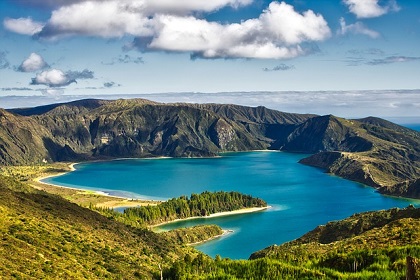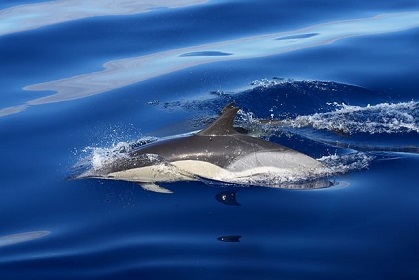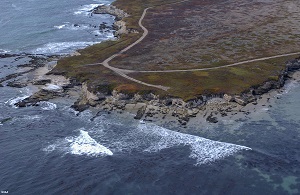News
Stories making wavesWave to the future?
NEW MARINE SANCTUARIES APPROVED
1) Azores creates North Atlantic's largest marine protected area


A month after an injured loggerhead turtle, named Nazare, made the news having been washed up in Cumbria, and then successfully released back into the wild in the Azores, the Portuguese archipelago is once again making headlines. The regional assembly of those islands have today, (18th October 2024) announced their approval of legislation to create the North Atlantic's largest marine protected area and the largest marine protected area network in Europe.
The waters around the nine islands that make up the Azores are not only home to turtles but also deep-sea corals, whales, dolphins, sharks, manta rays, fish, and unique hydrothermal vent ecosystems. The new marine protected area will safeguard 287,000 square kms of water surrounding the islands and meet the United Nations goal of safeguarding 30% of the planet's land and sea by the end of the decade.
Many local groups, industry representatives, scientists, and government officials worked together to successfully develop the plan for the park which features areas with full fishing bans and regions allowing selective fishing, to preserve vital eco-systems. It's hoped these negotiations will serve as an example, for others to follow, especially in the run up to the UN Biodiversity Conference (COP16), starting on the 21stOctober 2024. It was at the last summit (in 2022), that the world agreed to protect 30% of land and ocean by 2030.
"This is an achievement for the Azoreans, with the region leading by example at national, European and international levels in the protection and management of a vital part of our planet: the sea." said Jose Manuel Bolieiro, President of the Regional Government of the Azores. "We hope our decision inspires other regions, who must act to ensure the future health of the planet."
***********
2) US approves first ever tribal marine sanctuary (pic credit: NOAA)

On 11th October 2024, the Biden-Harris Administration announced that the National Oceanic and Atmospheric Association (NOAA) is designating 4,543 square miles of coastal and offshore waters along 116 miles of California's central coast as The Chumash Heritage National Marine Sanctuary. This is the first tribally nominated sanctuary in the United States to conserve the area's diverse range of marine life and celebrate Indigenous peoples' connections to the region.
The Chumash people, which span several tribes, have long depended on the ocean for fishing and shellfish, and today some are involved in environmental monitoring and advocacy work. NOAA say that the sanctuary will bring comprehensive community- and ecosystem-based management to nationally significant natural, historical, archaeological and cultural resources, including kelp forests, rocky reefs, sandy beaches, underwater mountains and more than 200 NOAA-documented shipwrecks.
*************
Footnote: Promising news from Scotland. This weekend marks 10 years since the carrier bag charge was introduced there and data from beach clean volunteers for the Marine Conservation Society shows that there has been a drop of 88% in the number of bags found per 100m of Scottish beach over the last decade.